Wang Ben Xu
1.The origins of Chinese characters: Jia Gu Wen 甲骨文on oracle bones


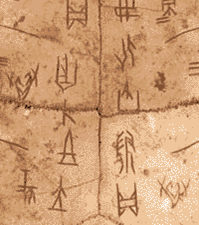







As he became the first serious collector,
Mr. Wang made quick progress interpreting 
oracle bone inscriptions. He suspected
that the turtle shells might push China's
written history back even further. His theory was
that the inscriptions might have dated back to the
Shang Dynasty, since no Shang writing had been found,
apart from some brief inscriptions on bronze vessels.
It was through Mr. Wang Yi Rong's illness that history of the
Shang Dynasty was discovered.
That was during the post-Opium
War years and Qing Dynasty was steadily 
weakening by foreign interferences and
political turmoil. Anti-foreign anger in
Shandong Province inspired peasants
and laborers who called themselves the
Boxer United in Righteousness.
The Empress Dowager, Qing Dynasty's ruler, 
heard that the Boxers
possessed certain magical powers
and invulnerable to bullets or other
weapons. She secretly summoned the Boxers to
Beijing and encouraged them to
target foreigners, regardless they
were missionaries, engineers or
businessmen, even
Chinese Christians,
in order to drive foreigners
out of China and restore China's glory.
When the plan became apparent, 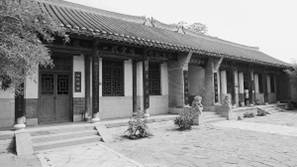
Mr. Wang Yi Rong rushed to the Palace
and waited until he had a chance to
plead to the Empress Dowager to take
a saner tactic, but his effort was in vain.
Boxer forces cut telegraph lines and 
destroyed train tracks. The trapped diplomats
quickly sent out words of their plight. By
the summer of 1900,foreign armies began to
gather in the treaty ports and there were clashes
with Qing forces. In June, the Empress finally sided
with the Boxers, declaring war on the foreign powers.
In the capital, Boxers besieged foreigners who
had retreated into churches and Embassy compounds.
During the summer,
the Boxers stormed the foreign settlements 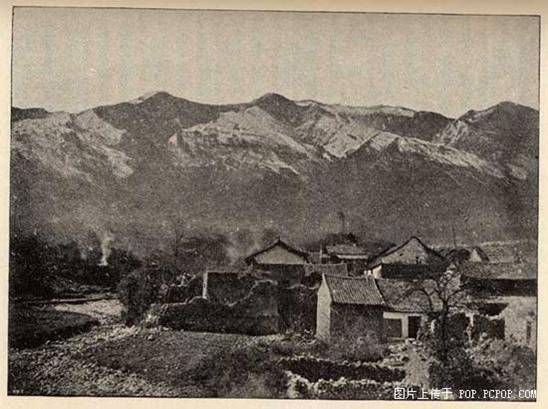
in Beijing and quickly laid siege to lightly armed
diplomatic compounds. As a Qing official,
Mr.Wang Yi Rong was appointed to commend
some of the Boxer forces in Beijing; and soon the
foreign troops arrived in Beijing. Even though the
Boxers tried to stop them, an army of 20,000 foreign
troops easily captured Beijing on August 14,1900.
There was no magic power against bullets.
As foreign troops entered Beijing from the east,
Empress Dowager and the young Emperor fled to the west,
heading toward Xi`an. For Mr. Wang, however,
fleeing was not an option, nor was humiliation.
In his residence at XiLanHuTong,
a small lane near downtown Beijing's WangFuJing,
an official and a great scholar,
Mr. Wang drank poison and drowned in a
well in his courtyard. His wife and
daughter-in-law committed suicide with him.
After Mr.Wang`s suicide,
a friend and fellow scholar, Mr.Liu E(刘鹗), 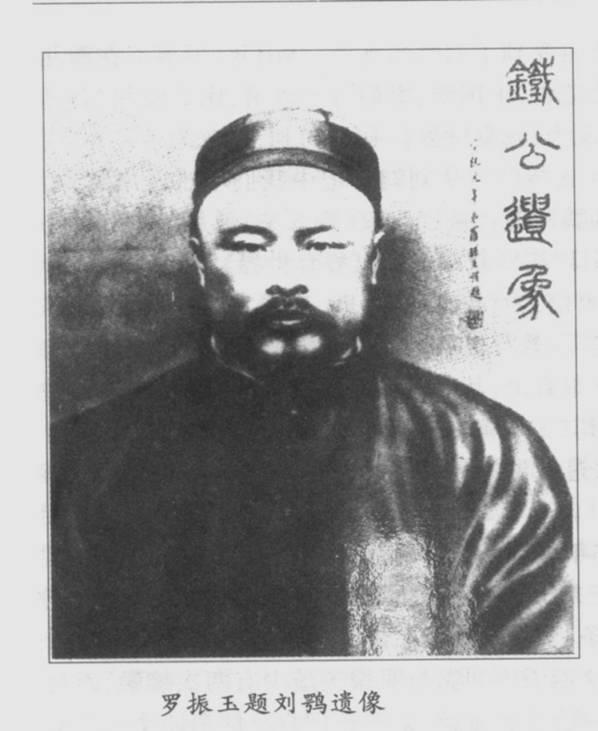
acquired Mr.Wang`s collection of about
one thousand pieces of dragon bones.
Mr.Liu was an influential man of considerable wealth and erudition.
He committed himself to finding the source of the dragon bones,
which he traced them back to Mr. Fan Wei-qing.
Fearing the end of monopoly,
Mr.Fan refused to reveal the true
source and misled Mr.Liu to locations far away from An Yang.
Mr.Liu`s commercial instincts
finally triumphed. He made 
offers to anyone who would
deliver dragon bones to him,
as word spread and eventually reached
the ears of the peasants of Xiao-tun.
At last Mr.Liu found himself inundated with
inscribed bones-many inscribed as recently
as the night before they were sold to him.
As his scholarly eye began to
pick out genuine samples from the 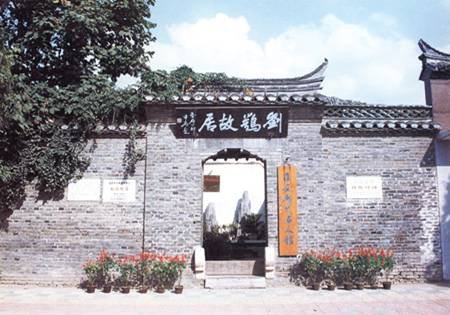
forgeries, clues to their source at An Yang began
to emerge. Mr.Liu E was also an epigrapher
and a physician. He ran a weaving factory
and a salt business. He was known for his
expertise in mathematics, mines, railway
and water conservancy. He was also a great
collector of antiques, which was one of the reasons
he acquired Mr.Wang`s collection.
Like his friend, Mr.Liu worked fast,
publishing the first book of oracle bone
rubbings in 1903.But Mr.Liu had bad luck just like Mr.
Wang Yi Rong when it came to foreigners and politics.
Later that decade ,he was accused of illegally selling
government-stored millet to foreigners. Although the
charges were trumped-up, he was convicted and exiled
to XinJiang. A year later, he died after a terrible life in China's Siberia.
Time during the end of the
Qing Dynasty was not easy; 
it was just as Mr.Liu described in his novel,
“The Travel of an Old Derelict”(老残游记);
he was the most famous novelist of his days. He wrote:
Now we grieve for our own life.
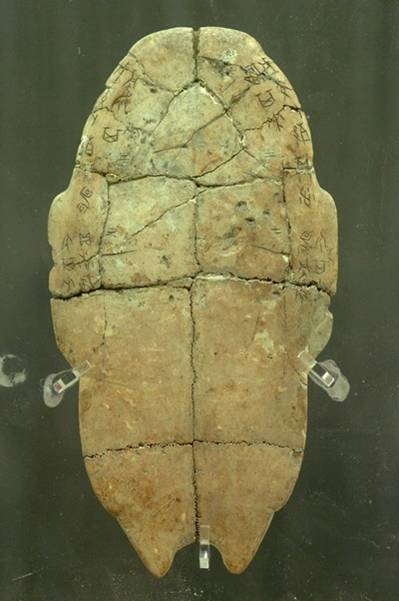

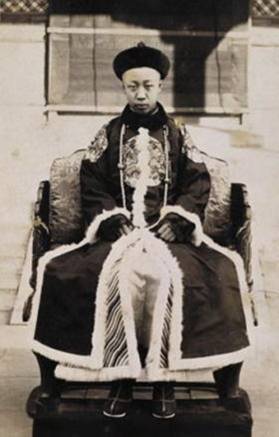
For one year,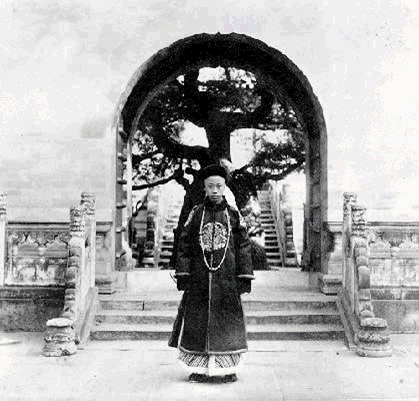
Mr.Wang lived in this past fragment
of the empire, studying old objects.
In 1924, a warlord finally forced the Emperor
Puyi to move out of his palace. Less than three years later,
Wang realized that the empire was gone forever and
committed suicide by jumping into the Kun Ming
Lake in Beijing Summer Palace.
By 1928,the newly founded Institute of History 
and Philology recognized AnYang as the site
of the first ever Chinese-organized archaeological dig.
Also in this year, exploratory excavations near the
west bank of the Huang River uncovered 784
pieces of inscribed oracle bones.
In 1929,archaeologists in An Yang excavated
more curved ivories, animal bones,
and inscribed turtle shells.
In 1936,the spring excavation season in An Yang
was scheduled to end on June 12.
The excavators were surprised on that day
when they found a large number of turtle shells
in a pit labeled H127.Within one and a half hours,
they uncovered approximately one thousand pieces
of fragments. The group was led by a young
archaeologist named Shi Shang-ru.
There is a capital city ruin of about 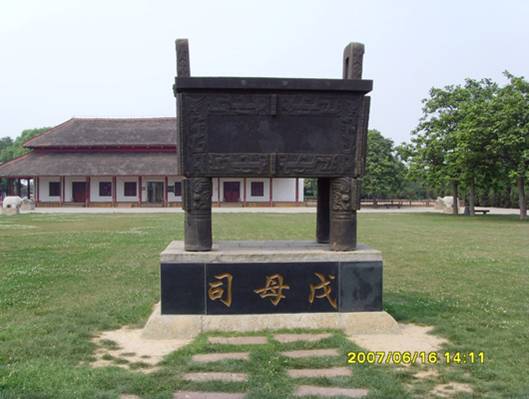
24 square kilometersin An Yang called
The Yin Ruins. Yin is the old name of An Yang.
The Shang Dynasty's King Pan Geng
moved the capital to this area ,
which became the political, cultural and economic
center of the ShangDynasty for over 300 years.
Since its first excavation in 1928,
the Yin Ruins provided the world with
numerous cultural relics, a great discovery in the history of archaeology.
The rulers of Shang Dynasty were so 
superstitious that they would resort to
divinity before going on a great activity.
The predicted outcomes were curved on the
turtle shells and animal bones with the characters.
When the augural result came true, the very shell or
bone would be saved as the official records. Therefore,
these collections became the earliest recorded
historical materials in China.
So far, more than 150,000 pieces
of turtle shells and animal bones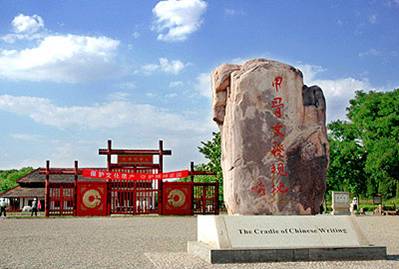
have been excavated, about 5,000 different
characters have been discovered, and more than
1,300 of them recognized, this shows that a well-developed
script with a complete system of written signs was
already formed in that early age. The oracle bones
recorded information about Chinese society, its politics,
economy and culture from 3,400 years ago.
The oracle bones have been the most important
direct historical materials for us to study Chinese
ancient history, especially that of the Shang Dynasty.
It is an invaluable treasure of mankind
During the 50 years from 1899 to 1949,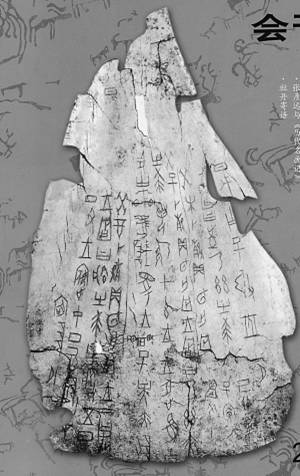
there were 289 scholars who studied oracle bones,
among them, about 230 Chinese
scholars and the other 59 scholars
from all over the world,such as Japan,
United States, United Kingdoms ,
Swede, and France. The most well known
Chinese scholars in this field include:
Luo Zhen Yu(罗振玉),
Wang Guo Wei(王国维),Guo Mo
Ruo(郭沫若)and Dong Zuo Bin(董作宾).
Oracle bones research suffered a terrible
set back during the disastrous period 
of the Cultural Revolution, from 1966 to 1976.
But in the last 30 years,
research projects on oracle bones
have been carried out in almost all major
research universities in China, including
Zhengzhou University, Peking University,
Beijing Normal University, Beijing University
of Language and Culture, Fudan University,
Nanjing University and Sichuan University,
to name a few.
Acknowledgement
I am confident that the researchzz
work of oracle bones will continue to 
enlighten us.
Thank you very much for your attention.
If you have any question,
I will be more than happy to answer.
I believe that I am a good listener.
